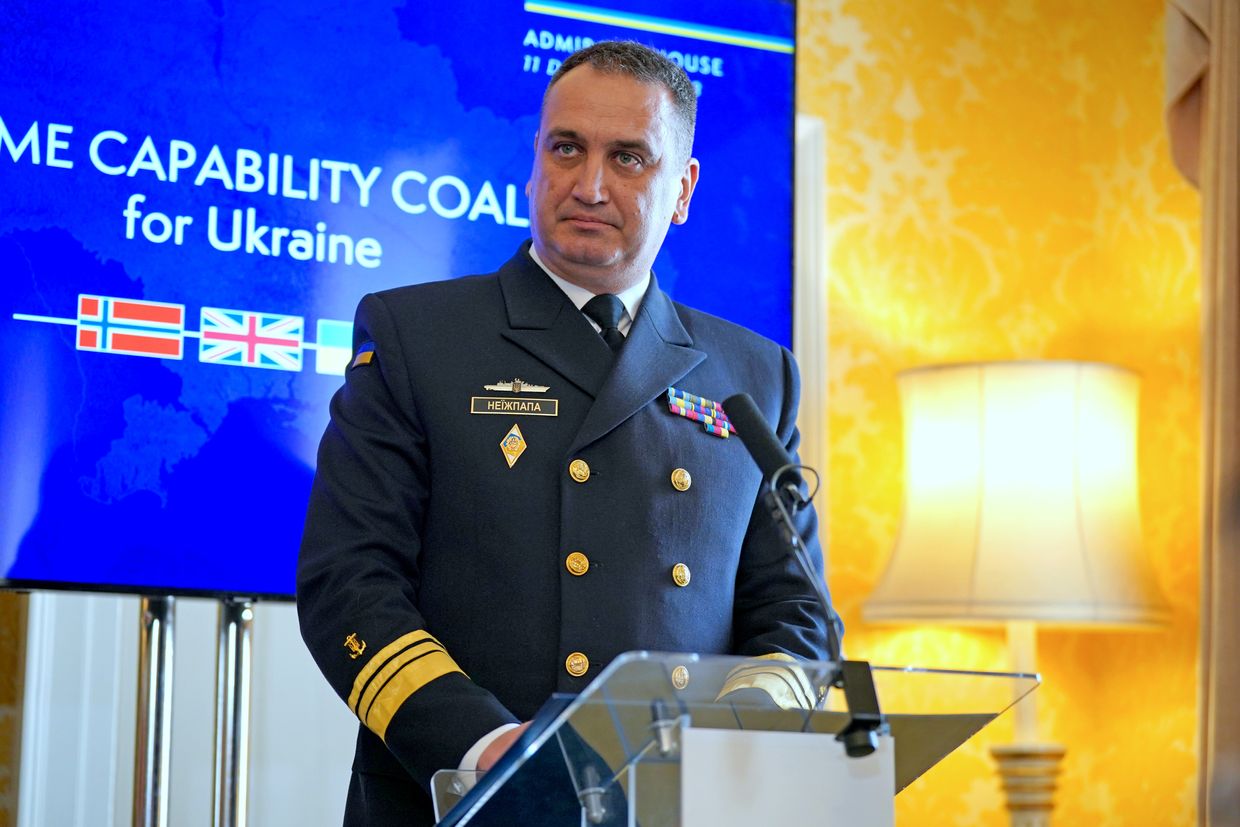
Ukraine's airfields under fire as Russia braces for F-16s
Illustrative purposes only: An F-16 Fighting Falcon from the Polish Air Force takes part in a NATO air Shielding exercise at the Lask Air Base in Lask, Poland, on Oct. 12, 2022. (Omar Marques/Getty Images)
As Kyiv gets ready to receive the first batch of Western F-16 fighter jets, Ukraine's airfields face an uptick in Russian strikes.
Over the past week, Moscow carried out at least three missile strikes targeting Ukrainian airfields — in Myrhorod, Poltava, and Kryvyi Rih — all located around 100 kilometers (68 miles) from the closest Russian troops.
What's worse, Moscow was able to film the attacks and their outcome using reconnaissance drones that had a clear view of the military sites hundreds of kilometers from the front line.
One of the videos shared by the Russian Telegram channels purported to show a strike on a Ukrainian airfield, where several jets were stationed in the open. The Russian drone's path wasn't obstructed by Ukrainian defenses.
The Russian Defense Ministry claimed to have destroyed five Su-27 Soviet-made jets and damaged two more stationed at the Myrhorod airfield, a Mi-24 helicopter at the Poltava airfield, and a Mig-29 fighter jet stationed at the Dovhyntseve airfield in Kryvyi Rih.
"There are some losses, but not as many as the enemy claims, after all, they have always (attacked airfields)," said former Air Force spokesperson Yurii Ihnat after the attack on the Myrhorod airfield.
Air Force spokesperson Illia Yevlash refused to give any comments to the Kyiv Independent on reported Russian attacks against Ukrainian airfields.
"Myrhorod is located 150 kilometers from the front line, and the Su-27s that are based there are the aircraft with the longest flying range among Ukrainian planes," Andrii Kharuk, a military historian and weapons expert, told the Kyiv Independent.
The question is whether it is worth keeping them so close to the front line," Kharuk said.
Russia has targeted Ukraine's air bases since the beginning of the full-scale war. Drone and missile strikes regularly hit both those near the front line and in the rear, such as Starokostiantyniv in the country's west.
"The Air Force is doing everything it can to counter the enemy and deceive it, including using mock-ups and other means," Ihnat said.
The Kyiv Independent could not verify these claims. No satellite images have been published to show the extent of the destruction.
A number of Ukrainian soldiers and activists have criticized Ukraine's Air Force for failing to properly protect the airfields despite advance warnings and the expected arrival of F-16 fighter jets.
The tactic of recent Russian strikes is not new, said Viktor Kevliuk, retired military officer and defense expert with the Center for Defense Strategies.
However, the fact that drones can penetrate Ukrainian defenses up to 130 kilometers deep into Ukraine-held territory is sending a worrying signal.
"The purpose of publishing (video of the attacks) is to demonstrate that they have the capabilities to destroy aircraft and that they should not be afraid of F-16s," Kevliuk said.
Awaiting F-16
Ukraine is preparing to receive dozens of F-16 fighter jets, with the first batch expected this summer. France also promised to transfer Mirage 2000-5 fighter jets to Kyiv next year.
Ukraine has faced challenges in adapting its Soviet-built infrastructure to store the advanced Western-made aircraft — a task which could take years, according to Ihnat.
Although defense experts do not expect F-16s to become game-changers in the war, the jets may strengthen Ukraine's air defense capabilities, which can shield the country's settlements from Russia's daily bombardments.
"It is fair to surmise that these strikes against base infrastructure are connected to the anticipated arrival of F-16s," Michael Kofman, defense analyst and senior fellow at Carnegie Endowment, told the Kyiv Independent.

According to Kharuk, recent strikes point to a new tactic tested by Russia.
This is a combination of reconnaissance and target destruction means — for instance, unmanned aerial vehicles that help Iskander missiles.
According to drone experts, Russia could have embedded technologies on its drones that allow them to fly over targets in radio silence.
Successful strikes may also damage trust that Ukrainian allies have in Kyiv's ability to protect the aircraft that the West is about to provide.
"There may be voices (among partners) like — 'we shouldn't give Ukrainians F-16s because the Russians will destroy them immediately'," Kharuk told the Kyiv Independent.
"But this is war," he added.
Unsolved problems
Special equipment is needed to detect and shoot down Russian reconnaissance drones hovering over the attacked airfields. Ukraine does not have such equipment, Kevliuk said.
"There are more airfields than we have anti-aircraft systems," Kevliuk said.
"The problem must be solved comprehensively. But we have to choose what to protect — industrial and economic centers, power generation facilities, or airfields. We cannot cover everything at once," he added.
Concrete shelters are required to protect aviation stationed at air bases. According to Kevliuk, Ukraine does not have them either.
"No one has invested in defense properly, no one has prepared airfields for basing aircraft in protected shelters," he said.
Kevliuk said the first steps must include uncovering Russian handlers around air bases, camouflaging the aircraft, and dispersing planes.
"Any means that can deceive the enemy and using the existing infrastructure will allow us to avoid exposing the F-16 jets to enemy attacks for a long time," Kevliuk said.















